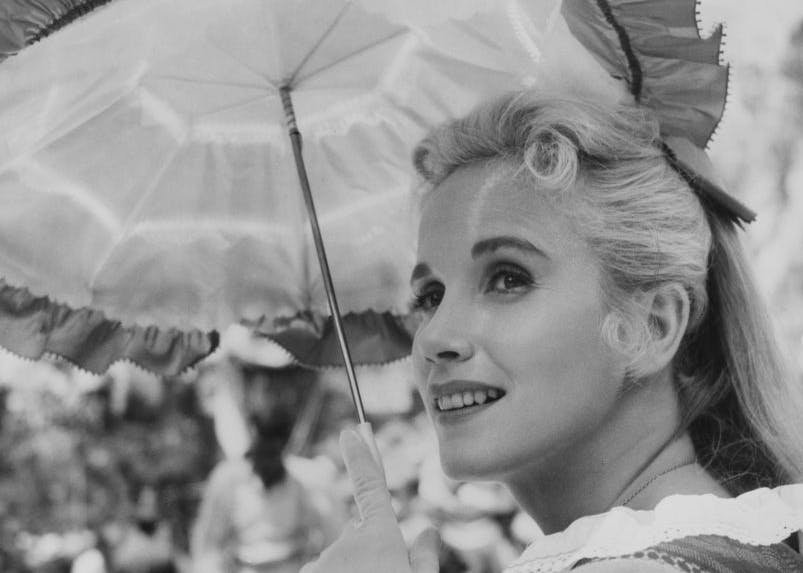In the Shadows of Plato and Whitman, a Father and Son’s Quest To Capture Life
Ross Lockridge, Jr. created a mythical county, like Faulkner’s Yoknapatawpha, that is meant to stand as a keystone in the universe. His son wrote his biography and followed in his footsteps.

‘Raintree County’
By Ross Lockridge, Jr.
Chicago Review Press, 1,088 pages
‘Shade of the Raintree, Centennial Edition: The Life and Death of Ross Lockridge, Jr., Author of Raintree County’
Indiana University Press, 536 pages
‘The Woman in Green’
By Larry Lockridge
Iguana Books, 226 pages
In the biography of his father, Ross Lockridge, Jr., Larry Lockridge borrows a term from a great literary critic, Northrop Frye, to describe “Raintree County”: encyclopedic form, the “attempt to embody the entire life cycle and culture of a people, written by one or more scribes who presume to reach beyond the merely personal to a vision of the whole.”
Ross Lockridge, Jr., inspired by Walt Whitman, created a mythical county, like Faulkner’s Yoknapatawpha, that is meant to stand as a keystone in the universe. Lockridge explores war, politics, religion, utopianism, romanticism, sex, slavery — virtually every aspect of the American experience to create his entry into the Great American Novel sweepstakes.
“Raintree County,” first published in 1948, shows what the result of monetary profits can do to an American writer. It killed Ross Lockridge, Jr. His novel, a Book-of-the-Month Club selection, winner of the MGM novel prize, and a best seller, far exceeded what a first-time novelist can expect or, as Lockridge dreaded, deserved.
So what did Lockridge have to lose? Everything, as he saw his creation chipped away by a publisher who requested extensive cuts, a book club seeking to excise the sexy parts, and a movie studio that wished to eliminate scenes that might inhibit a cinematic success.
The unprepared author invested everything in his novel, told almost no one about the long years of his labor, and quickly became mentally and physically depleted. If what he had wrought required so many revisions and excisions, how could he have written a masterpiece?
Lockridge died a suicide by convergence, as his son puts it: worried over what family, friends, and community made of his turning their lives into a myth.
Is “Raintree County” a great novel? It is the wrong question to ask about literature, Northrop Frye told me when I took his class at the University of Toronto. Handing out grades is just about the least informative job a critic can do.
I’ll tell you this, though: The colloquies between the novel’s hero, John Shawnessy, embarked on an encyclopedic evocation of the county and by extension of America, and a randy cynic/philosopher professor of American and world history, Jerusalem Webster Stiles, engage in the most amusing and profound exchanges I have ever read in an American novel.
Ross Lockridge, Jr. read Plato and had the hubris to believe he could do the philosopher one better. Well, like Plato, Lockridge creates arguments that continue right past the pages of the novel, as if the professor and his pupil are just borrowed for the occasion of print. How is it that these characters don’t actually exist?
“The Woman in Green” is a totemic figure never found — except in the imaginations of those who seek her: scientists of all stripes who proliferate in Larry Lockridge’s own playful experiment in “encyclopedic form,” the fourth novel of his series, “The Enigma Quartet,” set mainly in a famous utopian community, New Harmony, Indiana, first established in 1814 by George Rapp and then taken over in 1825 by Robert Owen.
“The Woman in Green” is an excursion into the future of 2050, when a lot of the worst in store for this planet has already happened, as the narrator (whose identity is only disclosed in the novel’s closing pages) tries to tell readers what it was like in 2025. Marcia Scanlon’s delightful archaically Greek illustrations enhance the novel’s mythological heft.
Along the way, references to “Raintree County,” and to its totemic tree, abound and resonate almost painfully for anyone who has read Lockridge Jr.’s novel and his son’s biography, which, by the way, is one of the most insightful, mournful, and yet exhilarating biographies I have ever read.
It is not often the case that a novel reads like the fulfillment of an earlier novel by another author, even if that other author is the novelist’s father. The characters in “The Woman in Green” are on a quest that its author knows cannot be satisfactorily concluded, a quest that a father has bequeathed to his son, who has learned that what is important is the quest itself, which reveals the extent of what can be known.
Mr. Rollyson is the author of “Lives of the Novelists.”

